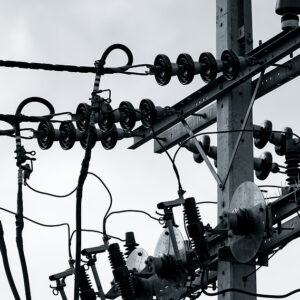“I fear we are going to have blackouts, and I’m afraid we’re going to see a significant number of lives lost.”
That was the warning given to the Senate Energy and Natural Resources Committee earlier this month during a hearing on the state of the U.S. electric grid. Experts say the retirement of fossil fuel electricity production and the lack of reliable renewables to replace it are putting America’s grid at risk.
The committee hearing was called to “examine the reliability and resiliency of electric service in the United States in light of recent reliability assessments and alerts.” The news was ominous.
James Robb, president and CEO of the North American Electric Reliability Corporation, told senators the system “is absolutely at an inflection point right now.”
The grid, Robb said, needs to be able to hold up especially well when demand surges, and residents call for huge amounts of electricity. He argued new forms of electricity production “can’t do that nearly as well as large, spinning mass generation. And that’s why the loss of coal plants and natural gas plants and nuclear plants is so concerning from a grid reliability perspective.”
“Grid transformation” has occurred throughout the U.S. for years as increasing numbers of reliable coal-fired power plants are retired, and renewable energy methods take their place. Activists claim the rapid shift away from carbon-based fuels to green energy is necessary to prevent the theoretical effects of climate change in the coming century.
David Tudor, CEO of the midwestern Associated Electric Cooperative, was the energy industry leader who warned senators of the potential of blackouts and deaths. The threat comes from the rapid retirement of fossil fuel power plants, which could bring about population-level deaths in the U.S.
“My concern is, you’ve got a gap period here that we have this push for new renewables and this push to shut down plants that work, and there’s nothing there in the middle to save us,” he said.
Grid warning signs have been flashing at the state level as well. For example, a panel of experts told the Pennsylvania Senate Environmental Resources and Energy Committee last month the state and the region were facing near-term power shortages due to the retirement of legacy plants in favor of newer, untested renewable source generation.
The concern is real. According to the Department of Energy, the typical American suffered just over eight hours of power outages in 2020. And the overall duration of power interruptions has more than doubled since 2015. In December 2022, the Tennessee Valley Authority was forced to implement rolling blackouts for the first time in its 90-year history.
Renewable advocates dismiss such concerns as short-sighted. Jose Zayas, the executive vice president of policy and programs at the American Council on Renewable Energy, said the problem “is not a renewable issue” but rather “a climate change issue.
“As extreme weather events increase in duration and intensity, our grid will come under increased stress, and we will continue to experience vulnerabilities with fuel shortage and delivery,” he said, arguing that renewable energy “often outperform forecasts during extreme weather events, while thermal generation often underperforms when water availability is constrained under drought conditions, and gas supply is constrained during extreme cold.”
Kathryn McGrath, a spokeswoman for the eco-nonprofit Earthjustice, said the U.S. grid “will undergo an expansion to enable more distributed clean energy and storage, and there is a tremendous opportunity to develop clean energy projects both large and small — community-based solar or battery storage in homes – that will increase reliability and offer more distributed and equitable access to affordable energy.”
“Construction of new long-distance transmission lines has been stalled in most regions for over a decade,” she said. “We need large, interregional transmission projects that support new renewable generation.”
In contrast, Kenny Stein, vice president for policy at the Institute for Energy Research, told DCJournal the grid “is definitely at risk going forward.”
“It is already a struggle to stabilize the grid with current levels of intermittent power generation, never mind the additional capacity that subsidies and mandates are forcing onto the grid,” he said. “Reserve margins have been declining in most regions, which leaves ever less backup capacity to cover for a drop in renewables.”
“Since the grid has to be balanced constantly, electricity being consumed as it’s produced, the fluctuation in renewables makes failures much more likely because there are many more opportunities for something to go wrong,” he argued, claiming that renewables present the “risk of blackouts even in normal circumstances.”
After the Senate hearing, Rich Nolan of the National Mining Association released a statement saying it was “impossible to listen to the testimony this morning, including from the nation’s top reliability regulator and from the CEO of our largest grid operator, and not conclude that we’re pushing aside existing, dispatchable generation – namely the nation’s coal capacity – far too quickly.”
“We are already in a grid reliability crisis, and the EPA’s regulatory onslaught is making an extraordinarily challenging situation all but unmanageable,” he said.
The U.S. Energy Information Administration said most electrical generation in the U.S. continues to come from coal, natural gas, nuclear energy, and petroleum. About one-fifth of the total generation comes from renewables.
Stein said the U.S. would unlikely witness “wholesale failures or collapse in the near term.” In most cases, he said, the issue would “mostly be inconveniences, say, not having air conditioning for a few hours during the summer.
“But we can’t rule out the risk of catastrophic failures,” he added.


